- 7 Days
- 6 - 12 People
- Bus
- Hotel Stay
Puntarenas Coast Tour
The Central Valley of Costa Rica is considered the heart of the country. It is home to the capital city of San Jose and neighboring towns such as Alajuela, Heredia, and Cartago. Two-thirds of the country’s population lives here.
The Central Valley is an excellent starting point for exploration because of the wide range of day excursions available from the area. You can enjoy day trips to coffee farms, join various cultural tours, view volcanic craters, see beautiful lagoons and even go on world-class whitewater rafting excursions.
The Central Pacific Coast extends from the Port of Puntarenas to Manuel Antonio National Park. Approximately a one-hour drive from the capital city of San Jose, the Central Pacific area boasts an incredible number of parks, towns, and beaches to explore and enjoy.
In the last few years, the Central Pacific of Costa Rica has gone through a big boom in development. Luxurious hotels, marinas, shopping centers, golf courses, and great restaurants have attracted more and more tourism to the area.
Various excursions invite you to visit exciting destinations – Rio Tarcoles and its large crocodiles, an island cruise around the Gulf of Nicoya, or a visit to Carara National Park, a transitional rainforest, the second most diverse ecosystem in the country.
Are you looking for a rush of adrenalin? Catch the waves on some of Central America’s best surfing beaches, go deep-sea fishing, or zip-lining, rappelling, and canyoneering.
Once you reserve your spot on tour, you will have access to our expert team of relocation consultants who are very knowledgeable in the areas of Costa Rican culture, residency, real estate, and investing in Costa Rica.
If you are interested in relocating to Costa Rica, take advantage of the opportunity to join our Virtual Relocation Tour.
Get a head-start on making your move to Costa Rica with our advice and information!
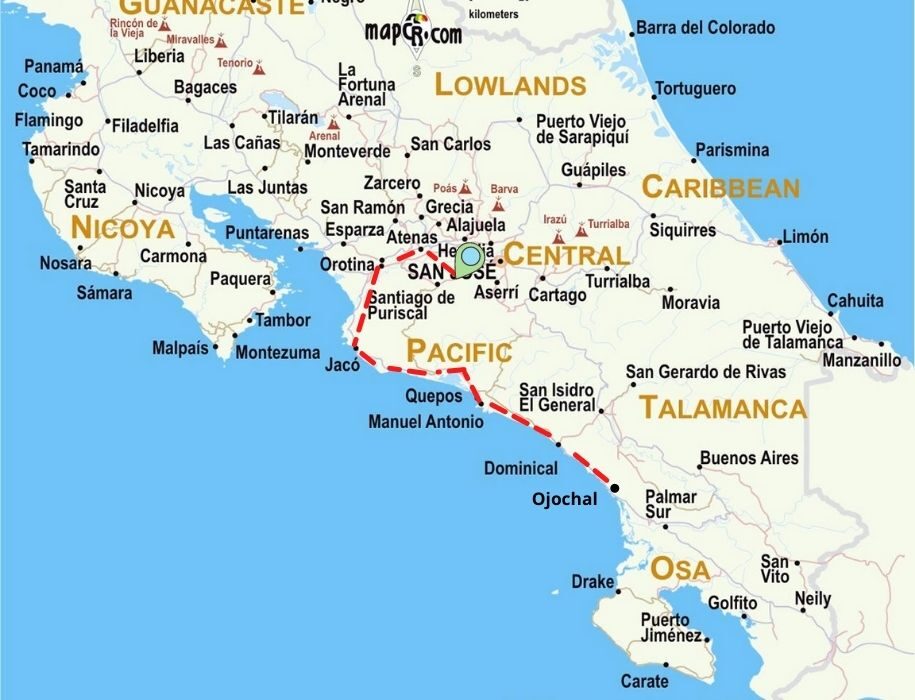
What will I experience?
You will experience Costa Rica on this tour by visiting popular places in the Central Valley and Central Pacific. Do not miss an excellent opportunity to take a Central Pacific tour in Costa Rica to be introduced to the area's lifestyle, environment, and infrastructure.
Below is just an example tour schedule. Feel free to make any changes suitable for your trip!
Tour Schedule
Day #1
- Arrival in Costa Rica
- Hotel Check-in (Hotel Palma Real, San Jose)
- Welcome Dinner
Day #2
- We will visit one of the two active volcanoes in the vicinity of San Jose.
- Lunch
- We embark on a tour of the neighboring towns of Escazu, Santa Ana, Ciudad Colon, Lindora, Valle del Sol.
- Dinner at Hotel
Day #3
- We leave the Central Valley and head to the Central Pacific, taking the road via Atenas, San Mateo and Orotina. We stop for coffee at Mirador Montes Aguacates, the highest point of our trip.
- Our next destination is the Los Suenos Resort and Marina, and its famous La Iguana Golf Course.
- Lunch at a waterfront restaurant in the Marina.
- Hotel Check-in
- Enjoy a memorable beach sunset and dinner.
Day #4
- We tour the neighboring communities - Jaco, Playa Hermosa, Esterillos (Oeste, Centro, Este), Bejuco, Parrita, Palo Seco.
- Lunch at Esterillos Town Center.
- We continue our tour of the various beach communities.
- Dinner at Hotel
Day #5
- We head further south to Dominical via Quepos/Manuel Antonio, visit the Marina Paz Velo, Quepos, and explore Manuel Antonio National Park with a local guide.
- Lunch in Manuel Antonio at El Avion.
- Hotel Check-in, Dominical.
- Dinner at Hotel
Day #6
- We will go whale watching in Uvita.
- We continue South on the Costanera to Ojochal, home of expats from all over the world.
- Lunch in Ojochal
- Return to Dominical
- Dinner at Hotel
Day #7
- Departure to San Jose. For those who are interested we can arrange personal meetings with the experts in Immigration, real estate and investing.
The Lifestyle
The Central Pacific lifestyle varies from luxurious sophisticated to laid-back and simple. You find housing from rustic to upscale homes and all between. Many expats chose the Central Pacific Coast to make their new home.
Activities like fishing, boating, surfing, horseback riding, ATV excursions, white water rafting, zip-lining, and more are offered all along the coast.
Are you looking for a more tranquil lifestyle? There are many villages and beaches in the area, where you hardly encounter any tourists.
Get to learn more in our Central Pacific Tour in Costa Rica!


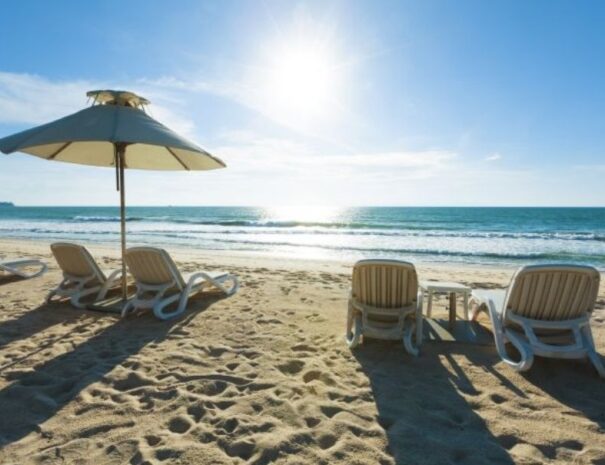
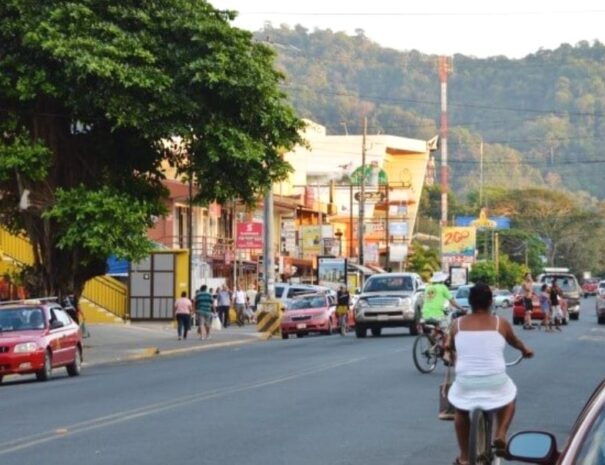
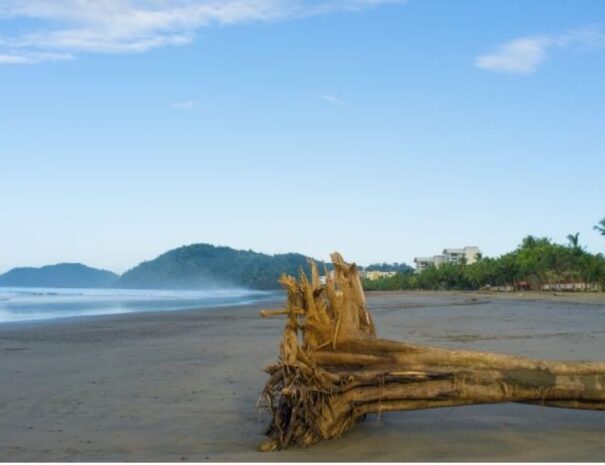


Costa Rican Food
Costa Rican food is known for its use of fresh ingredients such as fruits and vegetables and is usually moderate. The taste and preparation differ significantly from that of other Latin American countries.
Most Costa Rican dishes include rice and beans, or at least one of them. Since every Costa Rican grandmother knows best, Costa Rican cuisine may be described as “comfort food” cooked on a wood-fired stove.
Exotic fruit flourish in the tropical environment, so there’s always something fresh to experiment with in the kitchen.















Atenas
Surrounded by rolling green hills, coffee plants, and sugarcane, the small town of Atenas, which also happens to be the capital of the Atenas canton, offers an authentic taste of Costarican culture and a a glimpse into the life of locals. Located less than an hour outside the bustling city of San Jose and half-hour from the San Jose International Airport near Alajuela, Atenas, is the perfect destination for those who want authenticity without sacrificing convenience. Atenas is reported to have one of the best climates in the world, with year-round temperatures remaining at a mild 70 degrees Fahrenheit. In the summer, you can enjoy slightly warmer weather as temperatures rise into the mid-80s, and in the winter, all you will need to keep warm is a light sweater and a pair of jeans, as temperatures only dip into the 60s. The mild Costa Rica weather, combined with the area's rich volcanic soil, is ideal for growing coffee beans, one of the country's economic staples. Atenas is located right along the historic oxcart trail, which was used primarily to transport coffee beans from the Central Valley to ports on the Pacific and Caribbean coasts in the 1800s.
San Mateo/Orotina
Orotina may be tiny, but it is strategically located as a gateway to some of the best beaches and several national parks. Visiting this community is a great way to explore the real heart of Costa Rica; stay for a few days or create a base camp for exploring other parts of the country. No matter how you choose to spend your time in Orotina, this little town will greet you warmly and become a part of your Costa Rican travel that you look back on fondly.
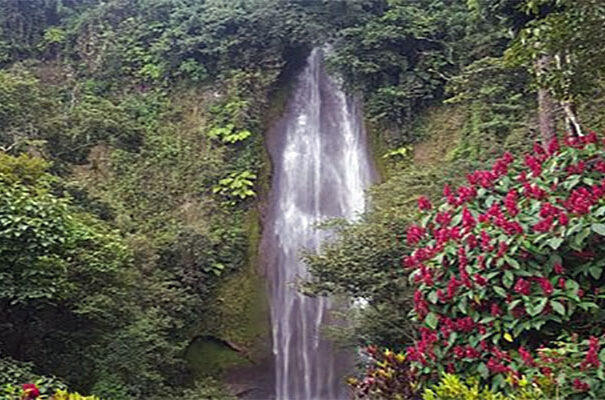
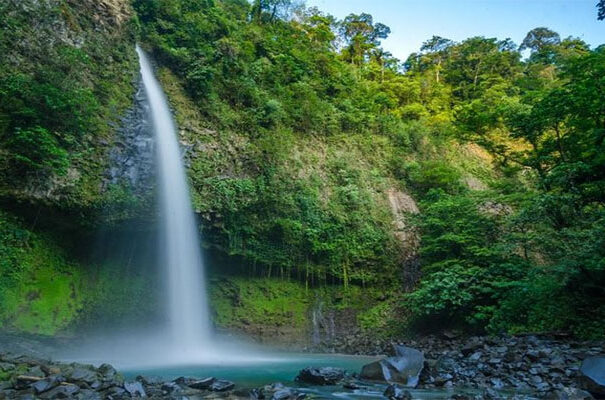
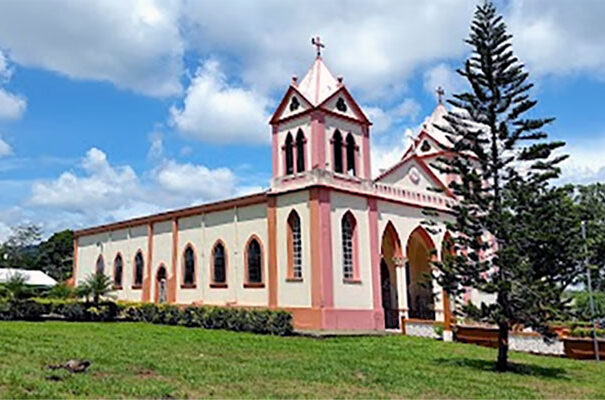
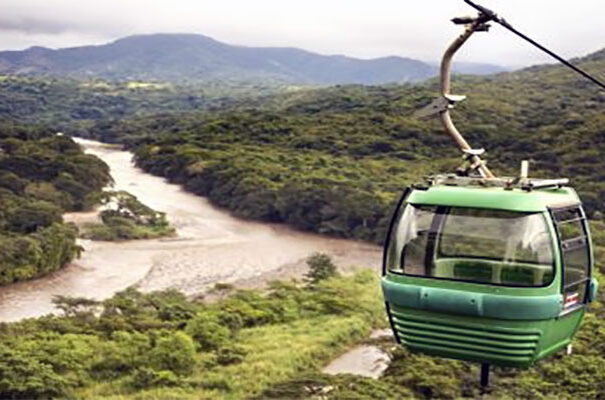

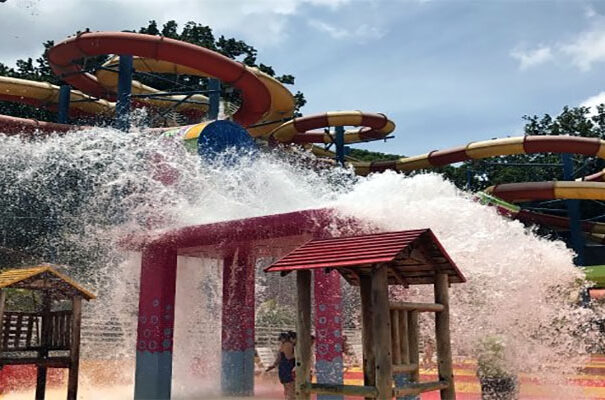
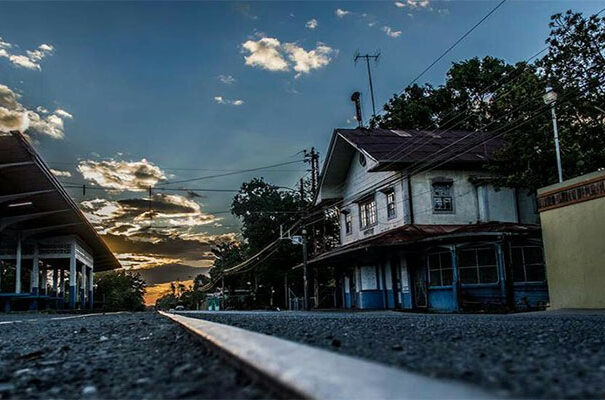
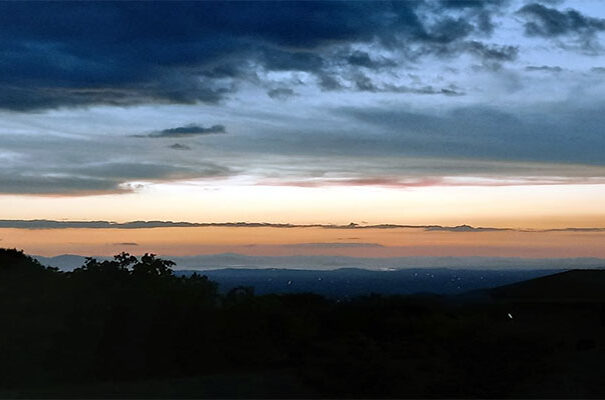
Los Sueños
Los Sueños Resort and Marina, on Costa Rica’s Central Pacific Coast, is the Billfish Capital of the World. Los Sueños provides a luxury gateway to incredible inshore adventures and the best offshore marlin fishery in the world.
Home to the renowned and highly competitive Los Sueños Signature Triple Crown Billfish Series, we invite you to experience a lifestyle beyond compare.
Discover the beauty of Los Sueños for yourself, whether vacationing at our onsite Marriott Hotel or staying in one of the gorgeous villas or condominiums. Los Sueños offers something for everyone, as you will see while browsing through our website or perusing our social media platforms.

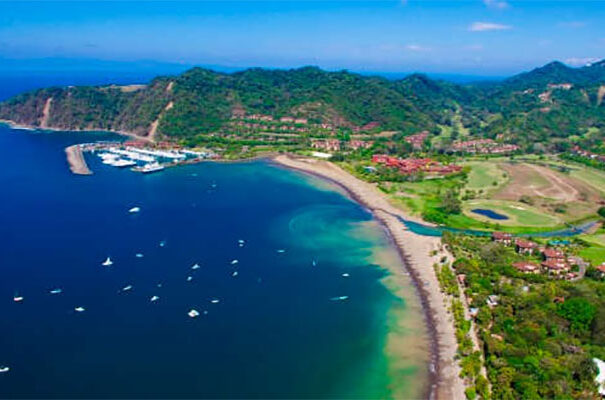
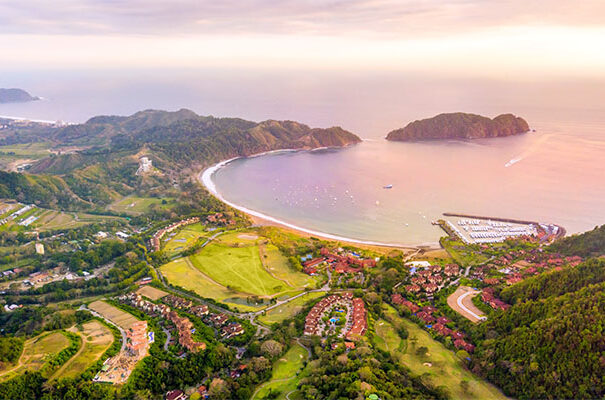
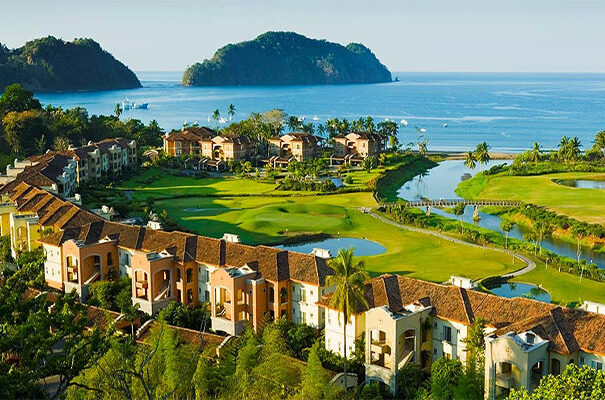
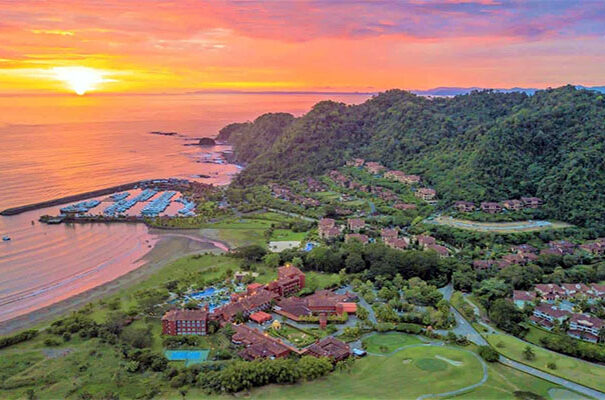
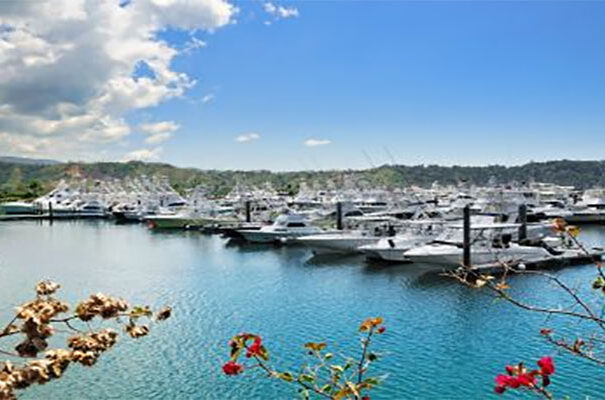
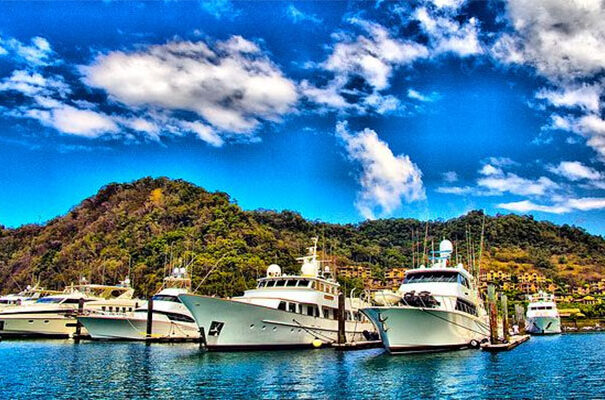
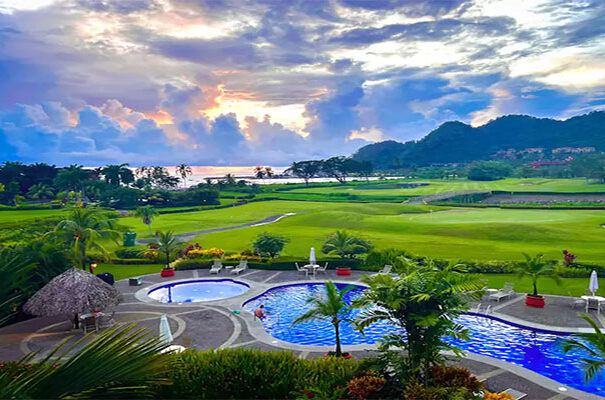
Playa Jaco
Jacó is a lively beach town about two hours from Costa Rica’s capital, known for its nightlife, carefree party atmosphere, and excellent aquatic sports.
This beautiful town is available for surfing, horseback riding, deep-sea fishing, ATV excursions, kayaking, boat trips, rafting, and other activities.
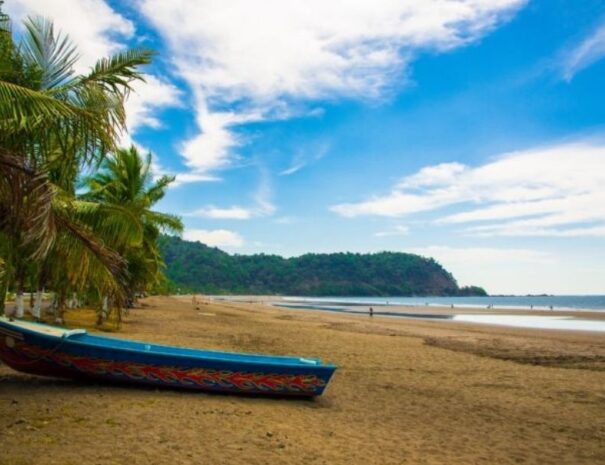
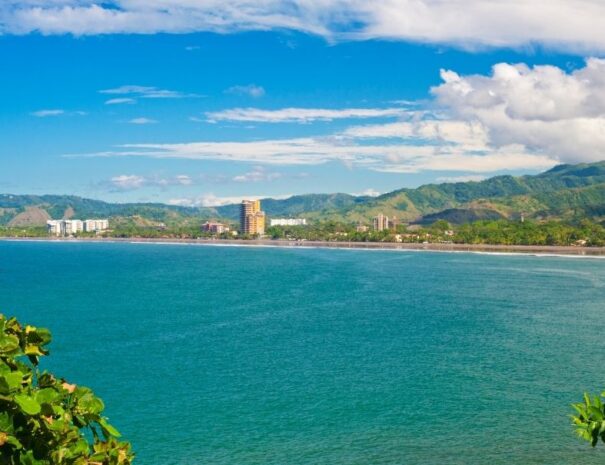

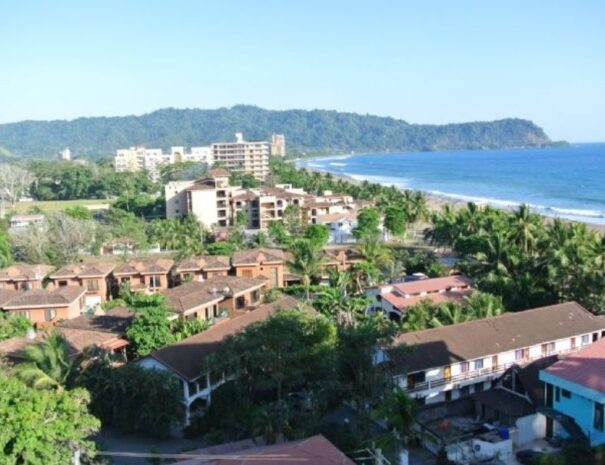
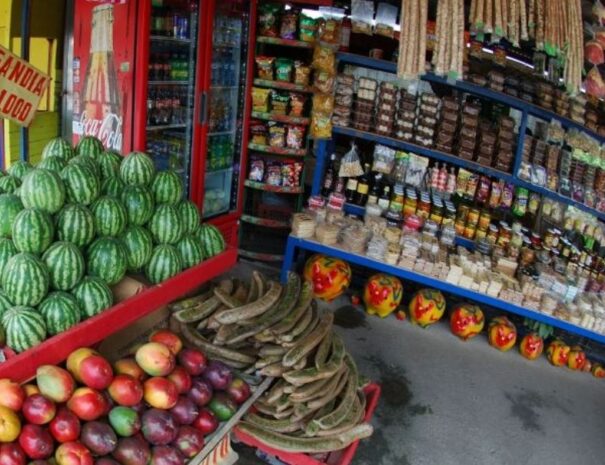

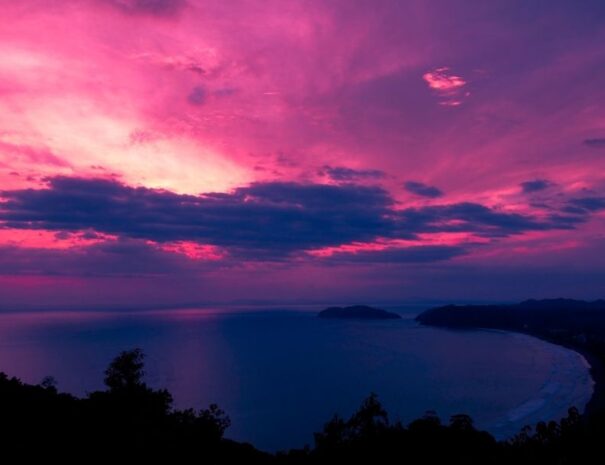

Playa Hermosa
One of two beaches named Playa Hermosa on Costa Rica’s Pacific coast, Hermosa de Jaco, would be the wild, wavy one.
Most visitors to this Playa Hermosa, meaning “beautiful beach,” come to ride her unstoppable, pounding waves. Playa Hermosa is the perfect spot for the seasoned surfer. It is a world-renowned beach hosting many surf competitions.
While surfing is the activity of choice here, you will find plenty of surf camps, lessons, and surfing gear for rent or sale in the area. There are also plenty of tours to check out during your stay. These include canopy ziplining, scuba diving, horseback riding, or a visit to the Pacific Rainforest Aerial Tram to soar above the rainforest while seated comfortably in an open-air gondola.
Although Playa Hermosa is only four kilometers from Jacó, you’ll notice a drastically different vibe here. If tranquil relaxation is what you’re seeking, you will find it here.





Esterillos
In our Central Pacific Tour in Costa Rica, we cannot miss Esterillos! No crowds, chocolate-colored beaches, and great surf best describe the beaches of Esterillos. You may never see another person as you stroll down the beaches where palms and almond trees line the forest edge, and the clear blue waters invite you to go for a swim. This serene, contiguous stretch of beach comprises Esterillos Oeste to the west and Esterillos Este to the east appropriately, where you will find plenty of accommodations laced throughout.
This part of the Central Pacific has one of the most consistent and cleanest breaks for surfers. Waves frequently break head high and are great year-round. Besides surfing, the waters are friendly towards all sorts of activities, such as horseback riding. At low tide, the size of the beach increases dramatically, creating a blemish-free vastness of dark sand waiting to be explored by beachcombers.
Accommodations are sprinkled throughout the Esterillos area— from those providing direct beach access to lodgings further back through the dense secondary forest to the lush hillside which overlooks this peaceful morsel of paradise.








Playa Bejuco
Playa Bejuco is only about 35km north of Manuel Antonio and about 30 km south of Jaco, but the atmosphere could not be more distant from the more popular destinations. The beach is pristine and clean with a Blue Flag rating, is a popular nesting area for birds, and even has some pretty good surf from time to time.
Playa Bejuco is representative of many off-the-beaten-path beaches in Costa Rica, surrounded by farmland, with most of the residences subsisting on agriculture and fishing. Much of the surrounding area of Playa Bejuco is undeveloped; however, several projects are beginning to sprout up.
The new Towncenter Esterillos, along the Costanera across from the village, has become the actual center of the area – restaurants, stores, a bakery, a supermarket with an ATM – invites people to meet there.
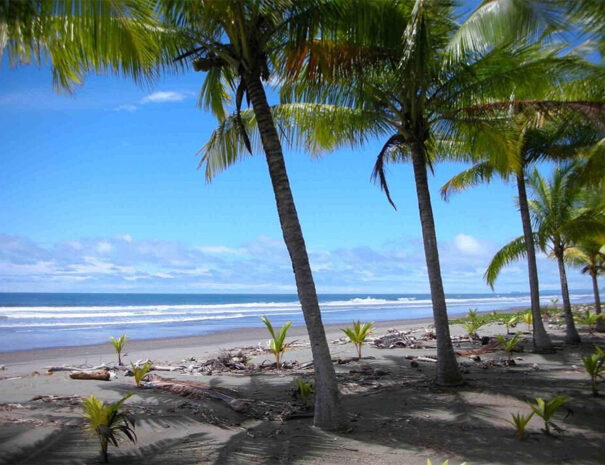
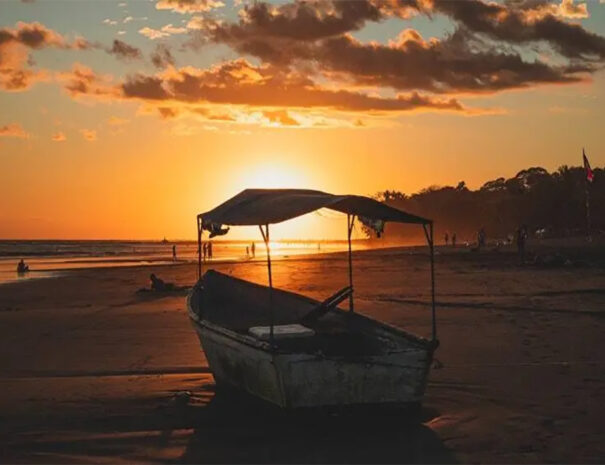
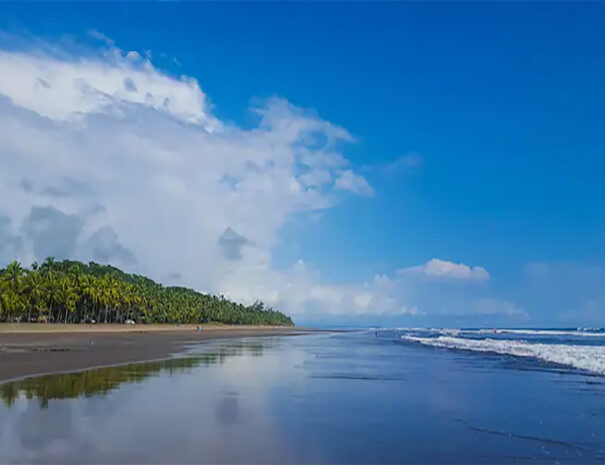
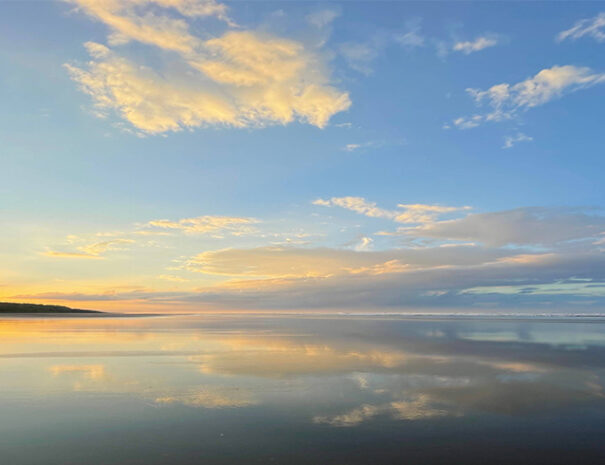
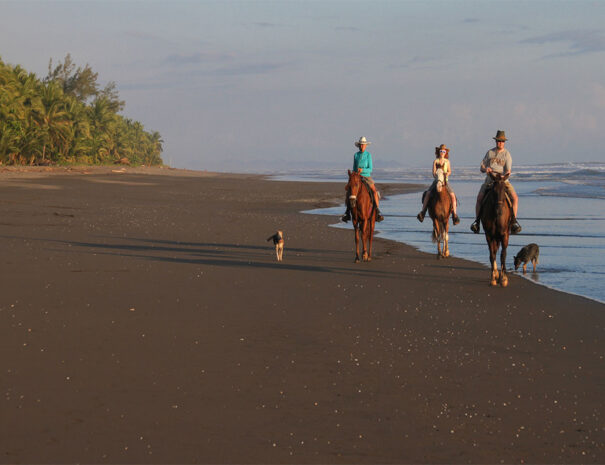
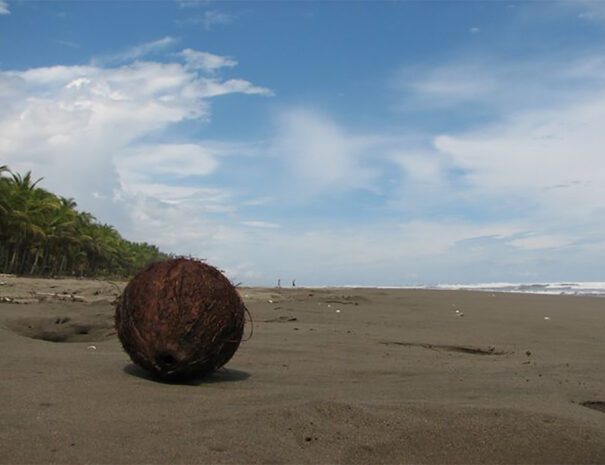
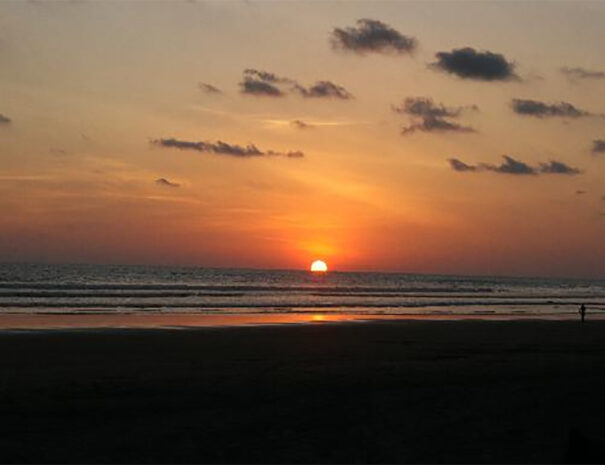
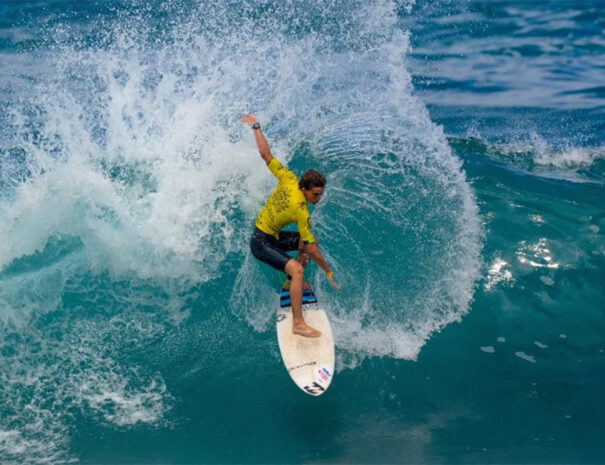
Parrita
In our Central pacific Tour in Costa Rica, we pass through the little town of Parrita on the way to the famous Manuel Antonio National Park.
According to local legend, the town’s name comes from a woman named Rita, who lived in one of the original settlements in the area before the arrival of the Spanish. Rita owned a business and often received packages, and the phrase “Es pa Rita” (It’s for Rita) was heard so many times that the canton in which the city resides was named Parrita.
The canton itself is surrounded by several rivers, including the Damas, Picaritos, Palo Seco, Jicote, Chires, and the Parrita. The community’s economy is almost exclusively dedicated to producing palm oil, an edible plant oil derived from African palm.
Due to its low elevation (just 15 meters above sea level), Parrita boasts a hot climate and does not suffer the strong wind plaguing some of the country’s more mountainous regions.
To access the small town, travelers can either use the Costanera or head down the Guapinol highway from Puriscal and the Talamanca mountains, situated inland.





Playa Bandera / Palo Seco
Playa Palo Seco is an incredible virgin beach hidden in the natural wonders of Parrita, whose sand is slightly dark in the sides and a bit clearer in the center and surrounded by abundant tropical vegetation.
The mouth of the Pirris river can be found in the west sector of this beach, and the Palo Seco estuary in its northern shore, an area famous for its mangroves and wildlife. A natural haven for fishing, you can catch Sea Bass, Red Porgy, and Grouper; the world record for sea bass fishing was established here.
Palo Seco’s local school created a program whose aim is the protection of sea turtles by incubating the eggs and supervising the release of baby sea turtles.








Quepos
A tropical inlet backed by rainforest, Quepos is a small booming harbor town famous for being one of the best places in the world for big-game sport fishing and the gateway to Manuel Antonio.
With various outdoor adventures and nightlife, the village center comprises 6 blocks of restaurants, bars, hotels, banks, post office, art galleries, and gift shops, all resting beside the main beach.
Quepos is now home to one of the prettiest and impressive marinas in Costa Rica. Marina Pez Verla opened in 2014, and it currently has about 200 wet slips that can accommodate boats of up to 200 feet. There is also a dry rack for up to 40 boats of max 38 feet.
The marina is also home to many restaurants and stores, and it also hosts multiple fishing tournaments each year.









Manuel Antonio National Park
Manuel Antonio National Park is located just south of the town of Quepos. Established in 1972 with a land area enumerating 1,983 hectares, it is considered the smallest Costa Rican National Park. It caters to as many as 150,000 visitors annually and is well known for its beautiful beaches and hiking trails. In 2011, Manuel Antonio was listed by Forbes as among the World’s 12 most beautiful national parks.
This park has impressive landscapes and several coves with white-sand beaches and lush foliage amidst great mountains and forests that reach the shores. The park is known for its excellent climate and scenic beauty.
Four beaches are within the park boundaries: Manuel Antonio, Espadilla Sur, Tesoro, and Playita.
The first is separated from the second by a “tombolo,” or a natural land bridge formed by sand accumulations. A roughly hour-long hike takes you from Espadilla to the top of Punta Catedral (100 m). Both Manuel Antonio and Espadilla Sur contain tidal pools and offer the possibility of snorkeling.
Although Manuel Antonio National Park is the smallest national park, the diversity of wildlife in its 6.83 km2 (3 sq mi) is unequaled with 109 species of mammals and 184 species of birds.
Manuel Antonio is a tiny seaside town with various beautiful places to stay, ranging from opulent luxury condominiums to quaint hideaway motels nestled away in the rainforest.





















Dominical
Surf, dive, snorkel, beach comb, horseback ride, bicycle, or relax in a hammock in Dominical.
Take a stress-relieving yoga class at Bamboo YogaPlay. Enjoy beach restaurants serving everything from East Indian curries and Italian pasta and pizzas to local Gallo pinto and shots of anise-infused sugarcane liquor. Savor lonely beaches populated by pelicans, frigate birds, brown boobies.
When you’ve caught up on your sleep and feel relaxed, take the family on a hike to the double-cascade waterfall at Nauyaca. Perhaps the family would be up for a horseback gallop on the beach or a hike to a smaller waterfall like Pazo Azul, whose plunge pool is popular with kids.








Ojochal
Ojochal is a well-known international residential community, not a tourist town. It has a more significant percentage of foreigners than nearly any other town in Costa Rica. It is often called “the Culinary Capital of Costa Rica” since many ex-pats have opened restaurants offering food from their home countries. There is a large U.S., Canadian, and French contingent there, but you can also find residents from every continent. There are Indonesian, Italian, Mexican, French, Thai, Tico, and World cuisine restaurants.
In Ojochal, you will find one of the most extensive collections of cooking ingredients of any grocery store anywhere in Costa Rica. If you like to cook, this is the place to be. The little supermarket in Ojochal sells everything from Caviar to Curry, five types of Capers, Spring Roll Wrappers, Nori, Pickled Ginger, Polenta, Couscous, and everything else you could imagine.
The ex-pat community has been thriving for over 25 years. The crime rate is also lower than most other areas since it is a residential community and not a tourist town.
The beaches in this area are stunning: Playa Tortuga, Playa Ballena, Playa Ventanas, and more.
There are many philanthropic organizations in the ex-pat community. And the community is the home of the Costa Ballena Women’s Club. Ex-pats can enjoy practicing yoga, have access to a gym, a golf course, a bowling alley, and a few spas, all within one town away to either the north (Uvita) or South (Tres Rios San Buenaventura).








Ballena National Park
Ballena National Marine Park is one of the unique reserves in Costa Rica. Located just offshore along the Central Pacific coast in South Puntarenas, the Ballena National Marine Park protects more than 13,000 acres of ocean and 9 miles of coastline. Comprised of mangrove forests, coral reefs, and untouched beaches, the national park is one for travelers who want to view fragile wildlife while escaping the hustle and bustle of everyday life.
The park gets its name from the humpback whales that migrate from August to November (heading north from Antarctica) and December to April (heading south from Alaska each year). With the whale migration happening much of the year, it is a great place to go whale watching. The area was declared a national park in 1989 to protect the creatures that migrated here for breeding and feeding purposes. Even the shape of the area from above looks like a whale’s fin! Ballena National Marine Park spans 110 hectares of land and 5,375 hectares of sea. There are approximately 85 species endemic to the waters of this area.
The landscape of Marina Ballena National Park varies depending on the tide. When the tide is low, travelers can take a stroll to the Punta Uvita Tombola, the whale tail of the area. Rocky formations appear about 1 kilometer from the shore. As one of the most prominent and unusual land formations, the Punta Uvita Whale Tail is a must-see.








We are looking forward to presenting you properties in the Central Pacific area of Costa Rica, such as:
- A house in Parrita.